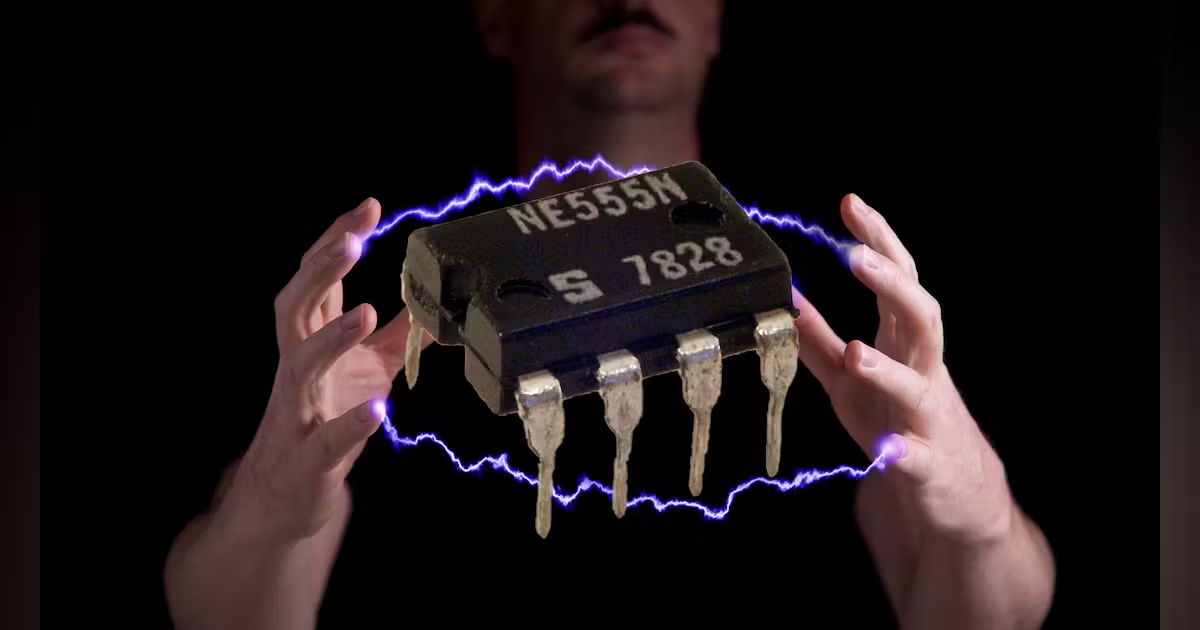
Unveiling the NE555 Timer Chip: A Timeless Marvel of Electronics
Title: Unveiling the NE555 Timer Chip: A Timeless Marvel of Electronics
In the vast realm of electronics, a tiny but powerful device has maintained its prominence for decades – the NE555 timer chip. This unassuming integrated circuit (IC) has been a cornerstone in countless electronic circuits, from simple time-delay applications to complex oscillator circuits. In this blog, we delve into the fascinating world of the NE555 timer chip, exploring its history, functionality, and diverse applications.
## Evolution and History:

Developed by Signetics (now part of ON Semiconductor) in 1972, the NE555 timer chip was initially designed as a solution for generating accurate time delays or oscillations. Over time, its versatility and ease of use contributed to its widespread adoption in both hobbyist and professional electronics projects. The NE555 chip quickly became a staple in electronics education due to its straightforward design and accessibility.
## Anatomy of the NE555 Timer Chip:

The NE555 is a versatile, 8-pin dual in-line package (DIP) IC with three main functional blocks:
1. Comparator: The comparator compares the voltage applied to the "Threshold" pin (pin 6) with the voltage applied to the "Control Voltage" pin (pin 5). When the threshold voltage exceeds the control voltage, the output of the comparator changes state.
2. Flip-Flop: The flip-flop is triggered by the output of the comparator, causing the output state to change. It consists of two transistors that toggle between on and off states.
3. Discharge Transistor: This transistor, connected to pin 7 (Discharge), controls the discharge of the timing capacitor (C1).
## Functionality:
The NE555 timer chip can operate in three primary modes: astable, monostable, and bistable.
1. Astable Mode: In this mode, the NE555 functions as an oscillator, generating a square wave output. By connecting resistors and capacitors to specific pins (R1, R2, and C1), you can control the frequency and duty cycle of the output waveform. Astable mode is commonly used in applications such as blinking LEDs and generating clock pulses.
2. Monostable Mode: In monostable mode, the NE555 acts as a one-shot pulse generator. When triggered, the output pin goes high for a fixed duration determined by external components. This mode is useful for applications like time delays, pulse-width modulation, and event triggering.
3. Bistable Mode: Bistable mode turns the NE555 into a flip-flop, allowing it to maintain one of two output states until triggered to switch. While less common than the other modes, bistable mode is employed in certhe tain latch and switch applications.

#Applications:
The NE555 timer chip's versatility has led to its use in a wide range of applications, including:

- Pulse Generation: Its ability to create precise and adjustable time delays makes it invaluable in applications such as timers, pulse generators, and PWM signal generation.
- LED Flashers: The NE555 is widely used to drive LEDs in various blinking patterns, making it a favorite for decorative lighting and visual indicators.
- Tone Generation: The chip can produce audio tones in simple sound synthesis circuits or tone generators.
- Motor Control: With additional circuitry, the NE555 can control the speed and direction of small DC motors.
- Voltage Regulators: The NE555 can be used to create simple voltage regulator circuits with adjustable output.
- Precision Timing: Its stable internal timing mechanisms make it suitable for precision timing applications like clocks and timekeeping devices.
As we conclude our exploration of the NE555 timer chip, it's evident that this unassuming device has stood the test of time in the ever-evolving world of electronics. Its simple yet versatile design, coupled with its ease of integration, has secured its place as a fundamental building block for electronic circuits of all complexities. Whether you're a hobbyist tinkering with basic electronics or a seasoned engineer working on intricate projects, the NE555 timer chip continues to be a reliable companion in your journey through the captivating realm of electronics.
Electrical Engineer || Renewable Energy Focus || Aiming for Master's/Doctoral Studies || Industrial automation || VLSI enthusiast.
8mo